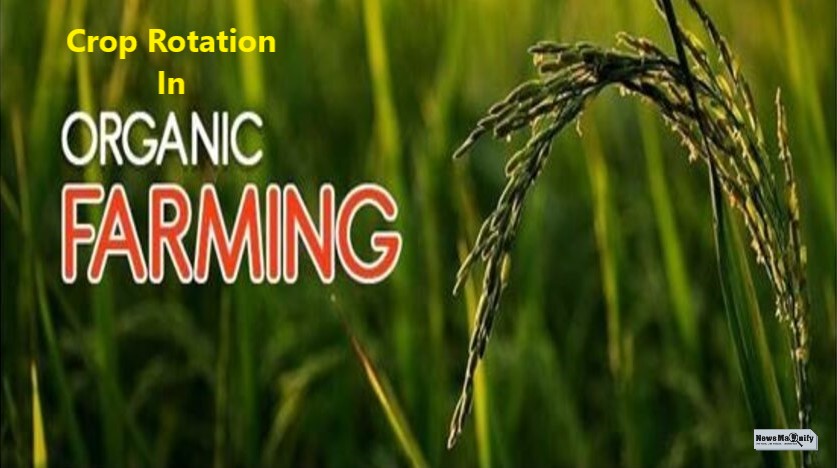
Why Do We Need Crop Rotation In Sustainable Farming?
- Business Startup
 Niccolo Romano
Niccolo Romano- June 28, 2021
- 0
- 7 minutes read
The crop rotation in sustainable farming is a thousand year old technique that has been proven effective to help the environment, improve fertilization of soil and so many other things. In this article, we will discuss why is crop rotation important and also how crop rotation help to preserve soil.
What Is Crop Rotation In Sustainable Agriculture?
The crop rotation in sustainable farming is the practice of growing varied types of crops in a similar area and also in sequential seasons. According to historians farmers in the Middle East practiced various types of crop rotations as early as 6000 B.C. But at that time they did not completely understand the science that is attached to it.
So the main login behind crop rotation is when the same crop is harvested in the same place for many years the soil gets depleted of several nutrition. So during the process of crop rotation on organic farm, a crop that takes a certain type of nutrition from the soil is followed during the next season by a crop that gives back that nutrients to the soil and draws different nutrients in the same proportion from the soil.
Environmental Benefits Of Crop Rotations In Sustainable Farming
Now you may wonder how is rotating crop sustainable? There are various issues that start to pop up when there is no crop rotation taking place. All these issues can lead to the yields getting decreased over the span of several years.
Initially, the land itself becomes tired and also loses its fertility. This Is because if the same type of crop is planted in the same place for years after years then the soil will be depleted from certain nutrients and there will be no refilling of the same. This makes the soil infertile for agriculture.
Secondly, there are certain pests that can reach a level from where the crops can be saved. This happens when you plant a certain type of crop for a long time providing a home to those pests. So crop rotation in sustainable farming is very important for controlling pests.
And finally, agricultural land is more susceptible to the forces of erosion that can be caused if the similar type of crops remains for years after years.
So let us have a look at some of the crop rotation advantages for better understanding.
Automatic Pest Control
As mentioned earlier, if there is a continuous rotation of crops then it will be difficult for pests to make their home in the crop. Thus they can be controlled automatically without the use of any pesticides.
Right Nitrogen Management
While you make decisions regarding the management of Nitrogen, it is important to know the relation between crop rotation and nitrogen. Along with other advantages, crop rotation helps in the mineralization of nitrogen.
Crop rotations including nitrogen by providing legumes such as beans, peas, and alfalfa provide the next crop with the important nutrients that it requires. It also plays a crucial role in decreasing the risk of nitrate leaching into the surface and also groundwater. This process improves the availability of nitrogen from the soil and that reduces the use of nitrogen fertilizers.
Against Soil Erosion
Depleted soil may weaken the soil and lead to soil erosion. But crop rotation prevents soil erosion as with crop rotation the soil gets sufficient of all nutrients and is never depleted of any. This helps to increase the stability of the soil. Along with that it also allows sufficient infiltration of soil and minimized surface runoff.
Treats Water Pollution
Through the process of crop rotation, the use of nitrogen fertilizer is cut and also reduces the emission of greenhouse gas drastically. The potential of global warming with nitrous oxide is more than carbon dioxide. So the reduction in synthetic fertilizer refers to the reduction in the emission of greenhouse gas through transportation and manufacturing.
Increase In Ability To Store carbon
Due to the high crop cover period, there can be a high content of carbon in the soil through the process of crop rotation in sustainable farming. Also, the frequency and tillage intensity is reduced. This expands the use of forage in the process of crop rotation as a part of residue management while higher carbon content in the soil enables combat change in the climate.
Crop Rotation In Present Days
Currently, the way crops are roasted depends upon many factors that include the type of soil, precipitation, the type of climate, and also the market value of various crops. There are some modern farmers that rotate soybeans and corn in a single field every alternate year. While there are other farmers who rotate six or even more crops in a single field over multiple years.
There are several advantages of crop rotation in sustainable farming, but along with that, there are disadvantages as well. One among them is the process of rotating crops may not be profitable all time because of the reduced acreage of crops that have a high value.
Conclusion
Crop rotations in sustainable farming are highly beneficial for the environment. It helps in the sustainability and productivity of the farm. Along with that this process also increases the fertility of the soil and also prevents soil erosion. Though this process carries some disadvantages with it still the advantages are more worthy.

